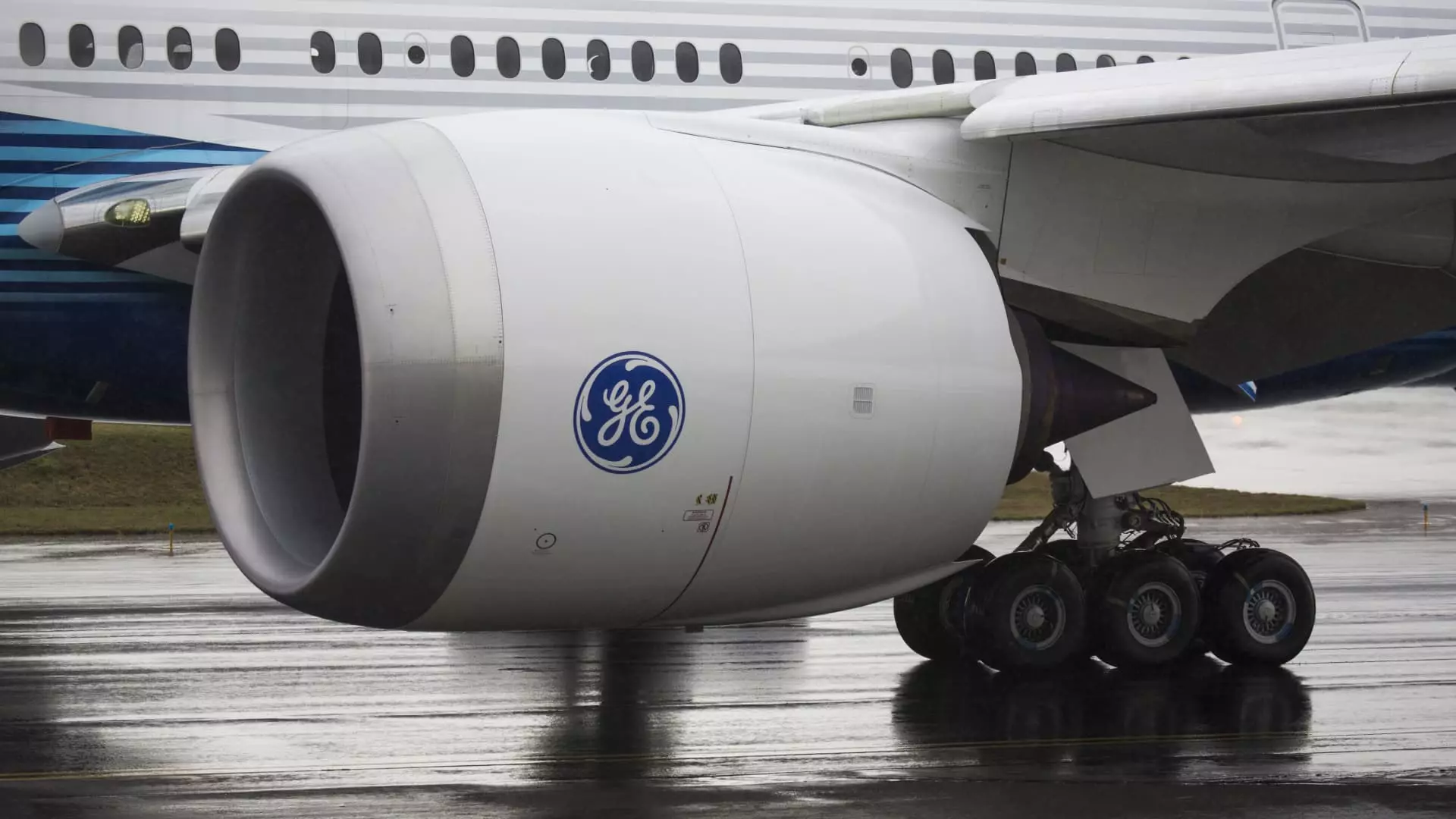The aerospace industry has faced considerable turmoil in recent years, particularly due to the creeping shadows of tariffs and their associated economic ramifications. As global trade tensions have escalated, many companies within the aerospace sector find themselves mired in uncertainty, struggling to maintain stability amidst shifting prices and supply chain breakdowns. However, one company has emerged unscathed—at least for the moment. GE Aerospace is navigating this chaotic territory with remarkable agility, demonstrating why it stands apart from its peers.
A Double-Edged Sword: Tariff Impacts
According to insights from Bank of America analyst Ronald Epstein, GE Aerospace’s resilience comes down to its strategic foresight and robust operational framework. While tariffs have posed a $500 million cost headwind for the company, Epstein remains optimistic, suggesting that GE’s proactive measures have effectively insulated them from deeper repercussions. This perspective reveals an essential truth; instead of crumbling under pressure, GE Aerospace has learned to view challenges as opportunities. The ability to not only foresee potential roadblocks but also to adapt to and mitigate them is something the broader industry should take note of.
In stark contrast, many companies are still grappling with the fallout from tariffs, exposing their vulnerabilities in a market that requires agility and foresight. The outright failure of competitors to prepare for these shifts demonstrates a lack of strategic planning, which in turn impacts their valuations and stock performances.
Operational Strength as a Differentiator
One of the standout features underscoring GE Aerospace’s resilience is its operational strength. Epstein pointed out GE’s ability to leverage free-trade zones and enhance operational efficiency to navigate these headwinds effectively. This kind of agility is crucial in a time when tariff-induced disruptions could easily derail less-prepared competitors. Unlike others in the field, GE Aerospace has ensured that their facilities and processes are equipped to manage such challenges.
When facing tariff pressures, the measure of a company’s operations can spell the difference between life and death in the market. Companies that rely on robust systems and reserve strategies for such eventualities often come out on top. For GE, these enhancements do not merely stave off losses; they create a foundation for potential growth, emphasizing the importance of operational excellence in achieving long-term objectives.
Market Positioning and Future Outlook
With the prospect of 17% upside from a stock price target set at $230, GE Aerospace offers a glimmer of hope in a troubled market. This assertion isn’t just hot air; it’s the result of a comprehensive understanding of market dynamics. The firm’s investment in quality and its steadfast approach to product excellence are paying off—something investors must recognize.
Larry Culp, the CEO of GE Aerospace, recently emphasized the importance of a strong U.S. trade surplus in discussions with regulatory figures. Contrary to the damaging perceptions propagated in media realms, stabilizing trade policy, especially for a crucial sector like aerospace, can engender a more balanced economic relationship. This revelation points to a broader trend where constructive dialogue and practical solutions can trump divisive politics.
Market Resilience Amidst Chaos
While the S&P 500 has lost ground by 7%, GE Aerospace has surged ahead, amassing gains of nearly 20%. This divergence is telling and speaks volumes about the company’s robust market strategy and its capacity to thrive in adversity. It not only reflects GE’s solid foundation but also invites investors to reconsider what a “safe bet” looks like in today’s economic landscape. In a world where uncertainty dominates news cycles, GE Aerospace remains a beacon, demonstrating that well-calibrated operational strategies can yield profitable returns even when the risks loom large.
As the political landscape around tariffs continues to evolve, the ability of companies such as GE Aerospace to adapt could redefine industry standards. The path ahead may still hold uncertainties, but GE’s blend of foresight, operational prowess, and solid market positioning serves as a roadmap for success amid chaos. The crucial takeaway here is that not all players in the aerospace game are struggling. Some, like GE Aerospace, have not only weathered the storm but have also aptly positioned themselves for what lies ahead.

